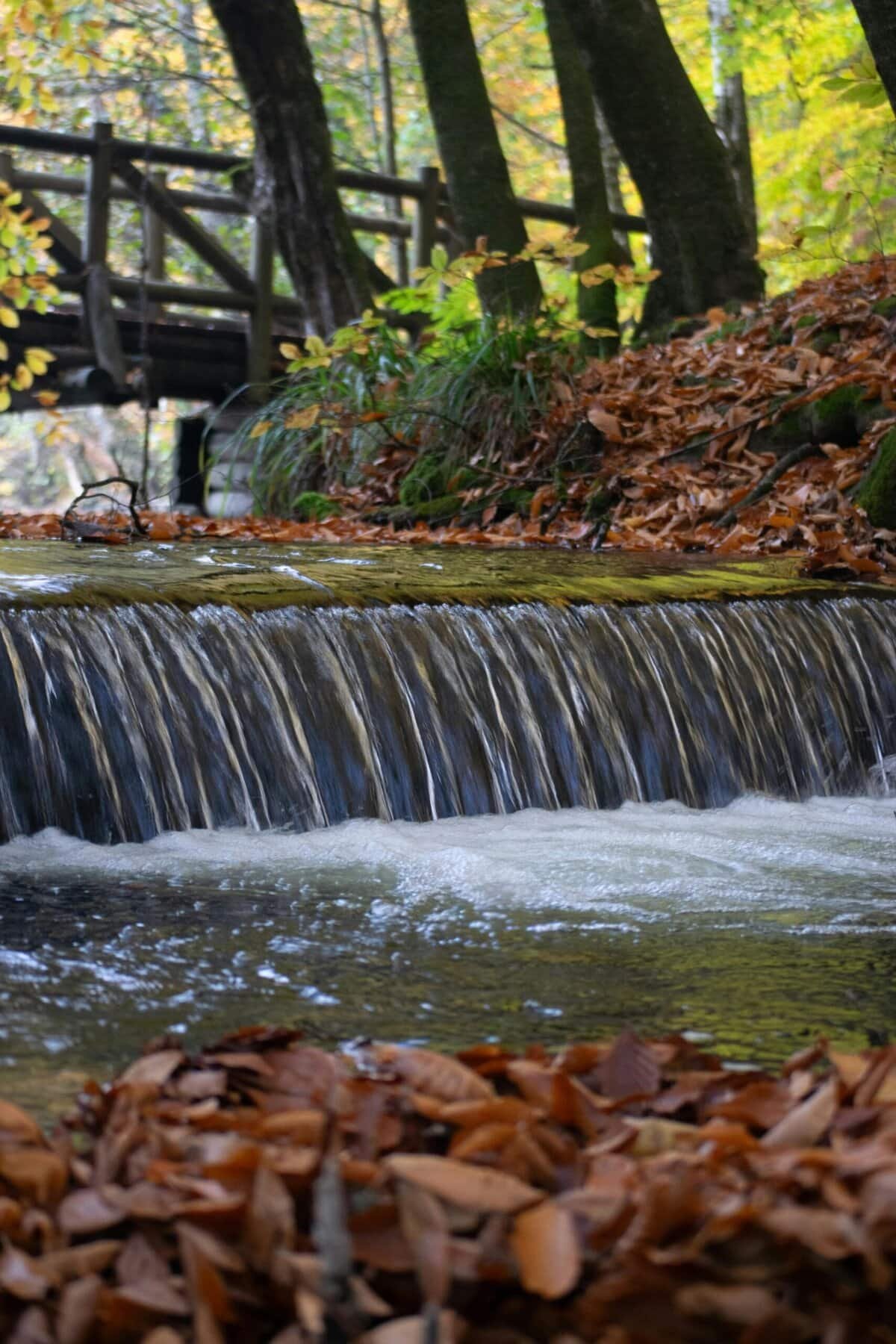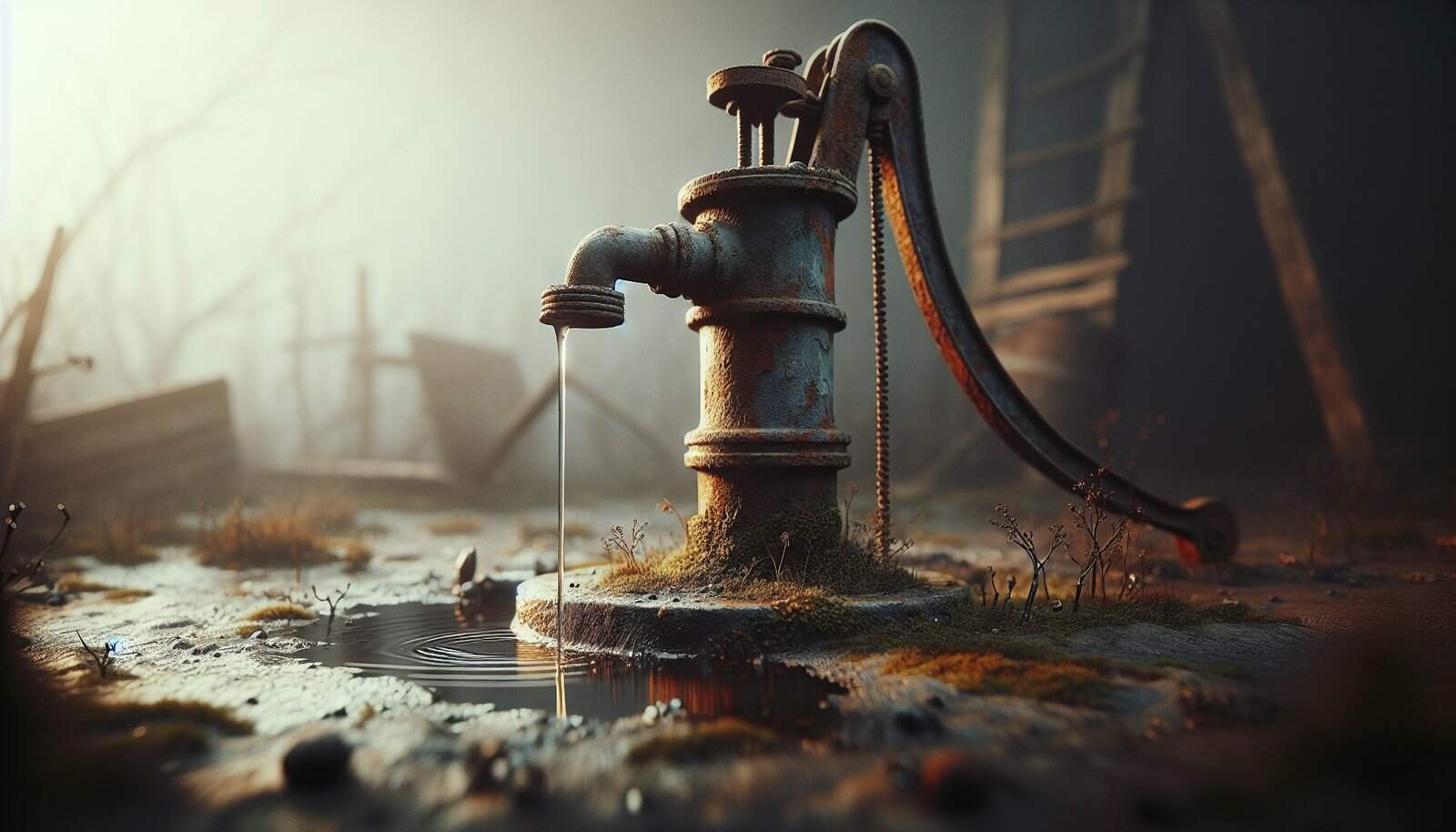Are you noticing changes in your water or the way your well behaves that make you wonder if it needs repair?

What Are Signs That My Water Well Needs Repair?
If your well is acting up, you may notice several warning signs. These signs can range from subtle changes in water quality to obvious mechanical failures. Paying attention early can save you money and protect your health.
Why you should pay attention to well signs
Your well is a sealed system interacting with groundwater, mechanical components, and your plumbing. Problems that begin small can quickly cause contamination, expensive equipment damage, or loss of water supply. Acting on early signs helps you avoid emergencies.
Common physical signs that your well needs repair
Physical signs are often the first things you notice because they affect how the well looks, sounds, or performs.
Reduced water pressure or flow
You may notice weaker flow from taps, showers that sputter, or a lawn sprinkler that underperforms. Reduced flow can indicate a failing pump, clogged intake, collapsed pipe, or dropped water table.
- If the drop is sudden, consider pump or pressure tank failure.
- If the drop is gradual, aquifer changes, seasonal drawdown, or deposits in the screen may be responsible.
Intermittent water supply or sudden loss of water
If your water cycles on and off, or stops altogether, you likely have a mechanical or electrical issue such as a failed pressure switch, burned-out pump motor, tripped breaker, or a broken pipe.
Strange noises from the pump or well area
Grinding, banging, or buzzing noises coming from the pump or pressure tank can mean bearings are failing, a pump is cavitating (sucking air), or a pressure tank bladder is ruptured.
Air in the water and sputtering faucets
If faucets sputter or you get a steady stream of air, your pump may be drawing air from a leak in the suction line (for shallow systems), a cracked well casing, or a failing check valve. Air can also be the result of a separated bladder in a pressure tank.
Cloudy, discolored water, or visible particles
Water that appears cloudy, greenish, brown, or rusty indicates contamination or disturbance. Causes include iron or manganese, sediment, algae, or surface water intrusion.
Unpleasant tastes or odors
A rotten egg smell suggests hydrogen sulfide or sulfur bacteria. A musty or earthy odor could be organic matter or algae. Chemical smells may indicate contamination from nearby sources.
Increased water bills or electricity use
If your pump runs more frequently or longer than usual, your energy bills can rise. This can result from a low water table, leaking pipes, or failing pressure controls.
Visible damage around the wellhead
Cracked casing, missing cap, damaged seal, or standing water around the wellhead are major red flags. Surface water pooling near the well increases the chance of contamination.
Pressure tank or control problems
If the pressure gauge fluctuates wildly or the pressure tank feels waterlogged, the tank’s internal bladder may have failed. A damaged pressure tank can cause the pump to cycle excessively.
Frequent pump short-cycling
Short cycling (pump turns on and off rapidly) is usually due to a faulty pressure tank, improper pressure settings, or leaks. Short cycling shortens pump life.
Positive bacteria test results
If laboratory tests indicate coliform bacteria or E. coli in your water, you must treat and repair the source immediately. This suggests surface contamination or breaches in the well system.
Table: Symptoms, Possible Causes, and Recommended Actions
| Symptom | Possible Causes | What you should do |
|---|---|---|
| Low water pressure | Worn pump, clogged screen, lowered water table, pipe leak | Check pressure gauge, inspect well pump, call pro if pump suspected |
| Sudden loss of water | Pump failure, power loss, broken pipe | Check breakers, contacts, call pump tech |
| Noise from pump | Cavitation, failing motor, air in line | Turn off pump; inspect for leaks; call technician |
| Air in water | Leaky suction, bad check valve, ruptured bladder | Inspect tank and check valve; call for pump/tank repair |
| Discolored water | Iron/manganese, sediment, algae | Test water; clean well; consider filtration |
| Rotten egg smell | Hydrogen sulfide, sulfur bacteria | Test for bacteria; shock chlorinate if necessary |
| Water tastes odd | Contamination, algae, chemical intrusion | Test for contaminants; remove source; treat water |
| Standing water near wellhead | Damaged cap/casing, poor drainage | Remove water; inspect and seal wellhead; fix drainage |
| Positive coliform/E. coli | Surface contamination, faulty cap | Disinfect well; repair wellhead; retest water |
| Increased bills/short-cycling | Leaky pipes, pump issues, bad pressure tank | Check tank and pump; inspect piping; call pro |
How to inspect your well safely
You should perform basic visual and audible inspections, but avoid dangerous or invasive checks without training.
Visual inspection checklist
- Look for cracks in casing, loose or missing well cap, or corrosion.
- Check for standing water, pooling, or erosion near the well.
- Inspect electrical conduit and junction boxes for damage or signs of water.
- Observe the pressure gauge on your tank for odd behavior.
Safety precautions
- Turn off power to the pump before touching electrical components.
- Don’t remove the well cap unless you’re trained; an unsealed well can become contaminated, and you risk injury.
- Wear gloves and eye protection if you handle chemicals like chlorine.
- Call a licensed well contractor for anything beyond simple visual checks.

What to do when you notice a problem
Having a plan helps you respond quickly and correctly.
Immediate steps you can take
- Turn off power to the pump if you suspect an electrical problem or water leaking.
- Stop using water if contamination is suspected until test results are back.
- Take photos and notes of what you observe to help technicians diagnose the issue.
When to call a professional
Call a licensed well contractor immediately if you detect contamination (positive bacteria), structural damage to the wellhead or casing, persistent low pressure that you can’t fix, or if the pump is making unusual noises. A technician can perform flow tests, pump inspections, well camera inspections, and sanitary repairs.
Diagnosing the cause: basic tests and checks
Knowing what tests to request or perform helps you get faster, accurate repairs.
Pressure and flow tests
A pump technician can measure static water level, drawdown, and pump performance. These figures help determine if the issue is mechanical or due to aquifer conditions.
Water quality testing
Have your water tested by a certified lab for:
- Bacteria (total coliform and E. coli)
- Nitrates/nitrites
- pH
- Iron and manganese
- Turbidity
- Total dissolved solids (TDS)
- Sulfates, chlorides, and specific contaminants relevant to your area
Well inspection with a camera
A camera inspection lets you see sediment, biological growth, damaged screen, or collapsed casing inside the well. This is often decisive in diagnosing the problem.

Cost considerations and typical repair ranges
Costs vary widely based on region, depth, and the parts that need replacement. Below is a general guide.
Typical cost ranges
- Well inspection and camera: $200–$500
- Well water test (basic bacteria and nitrates): $50–$200
- Pressure tank replacement: $300–$1,200
- Submersible pump replacement: $800–$3,500 (depending on depth/size)
- Well seal/cap replacement and sanitary repairs: $200–$800
- Shock chlorination and disinfection: $100–$300
- Well rehabilitation (mechanical cleaning, developing): $500–$3,000
- Drilling a new well: $3,000–$25,000+ (depending on depth and geology)
Note: These are approximations. Always get multiple estimates and check licensing and insurance.
Preventive maintenance to avoid repairs
Regular maintenance reduces the likelihood of sudden failures and contamination.
Routine maintenance schedule
- Annually: Test water for bacteria, inspect wellhead and cap, check pump operation.
- Every 2–3 years: Test for iron/manganese and other local contaminants; inspect pressure tank.
- As needed: Re-chlorinate if contamination is found or after any well work.
Table: Maintenance Task, Frequency, Why it matters
| Task | Frequency | Why it matters |
|---|---|---|
| Water bacterial test | Annually | Detects contamination early to protect health |
| Visual wellhead inspection | Annually | Prevents surface contamination and detects damage |
| Pressure tank check | Annually | Prevents short cycling and pump damage |
| Water quality testing (expanded) | Every 2–3 years | Tracks contaminants like iron, manganese, nitrates |
| Shock chlorination | After contamination, or when work is done | Disinfects the well and plumbing |
| Professional pump inspection | When performance drops | Extends pump life and reduces emergency repairs |

How to prevent algae in your water well
Algae are photosynthetic organisms that thrive in light and nutrient-rich environments. In wells, algae typically indicate surface water intrusion or poorly sealed well components. Preventing algae focuses on eliminating light and limiting nutrients and surface water access.
Why algae can enter your well
Algae require sunlight, nutrients, and water. If the wellhead, pit, or casing is exposed to sunlight or surface water that carries organic matter, algae can colonize surfaces and potentially cause water quality issues or filter clogging.
Signs that algae may be present
- Greenish tint to water
- Slimy or stringy particles in water
- Filter clogging more frequently
- Musty or earthy odor
- Increased bacterial counts (algae can support bacterial growth)
Preventive measures for algae control
- Keep the wellhead sealed and sanitary: Ensure the well cap is intact, vent screens are in place, and the sanitary seal meets local code.
- Eliminate sunlight: Avoid translucent casings or light-exposed pits. Cover pits securely and use opaque materials.
- Control surface water: Grade the ground to slope away from the well, install a concrete pad or crushed rock around the well, and avoid flower beds or irrigation near the wellhead.
- Remove nearby standing water: Algae thrive in stagnant pools; drain or treat any standing water sources near the well.
- Maintain vegetation: A short grass buffer helps reduce surface runoff and erosion. Deep-rooted trees and shrubs should be kept at a safe distance to avoid root intrusion.
- Use screened vents: Vent openings should be screened with fine mesh to keep insects and debris out while allowing air exchange.
- Regular cleaning and maintenance: Schedule periodic disinfection and cleaning if you live in an area prone to algae or surface contamination.
Treating algae if contamination occurs
If algae already exist in your well or water system, follow these steps:
- Test your water to confirm algae or microbial contamination.
- Shock chlorinate the well to kill algae and bacteria (see detailed procedure below).
- Flush the system thoroughly until chlorine is gone.
- Re-test water after treatment to confirm safety.
- Repair any pathways that allowed algae ingress (cap, pad, drainage).
Detailed: Shock chlorination procedure (for homeowners)
Shock chlorination is the common method for disinfecting wells. Use caution—improper handling of chlorine can be dangerous.
Preparations
- Wear gloves, eye protection, and long sleeves.
- Calculate well volume (gallons): Well volume = (well casing area in ft²) × (water column height in ft) × 7.48 gallons/ft³. Ask your well contractor if unsure.
- Use unscented household bleach (5–6% sodium hypochlorite) or a pool-grade chlorine solution. Follow local guidelines—some regions require a professional.
General shock chlorination steps
- Turn off the pump and power.
- Open a wellhead port if present; otherwise, pour the calculated amount of bleach into the well through a clean funnel. Common target free chlorine concentration is 50–200 ppm in the well water, but many homeowner methods aim for 100–200 ppm.
- Connect a hose from a garden faucet to the top of the well or use a separate container, and run treated water through household plumbing until you smell chlorine at every faucet.
- Let the system sit for 12–24 hours (or longer; some recommend 24 hours) with no water use to ensure contact time.
- After the contact time, flush the system by running outside faucets or a garden hose until chlorine smell is gone and the water tests below safe residual levels for chlorine.
- Turn pump and power back on and retest water for bacteria.
Safety and disposal
- Never store or transport large volumes of bleach close to children or pets.
- Do not mix bleach with acids or ammonia — this produces dangerous gases.
- Dispose of chlorinated water away from wells, septic systems, and sensitive landscaping. Let strong chlorine-treated water run off into a location where it won’t harm plants or animals.
When to use a professional
If you are uncomfortable performing shock chlorination, if your well is deep or complex, or if repeated disinfection fails to remove bacteria/algae, hire a licensed well contractor and a certified lab for retesting.

Differences between algae, bacteria, and mineral problems
Understanding what’s wrong helps you select the correct fix.
Algae vs bacteria vs iron/manganese
- Algae: Photosynthetic, often green-colored, slimy, and associated with light or surface water input. Can clog filters.
- Bacteria (coliform/E. coli): Indicate fecal or surface contamination and present a health risk. Not always visible.
- Iron/manganese: Cause rust-colored or brown staining and metallic taste but are geologic, not biological. Filters can remove them, but they don’t respond to chlorination long-term like bacteria.
Testing is the only way to be sure which issue you have.
Dealing with recurring problems
If an issue reappears after repair, you need a more thorough approach.
Common reasons problems recur
- Incomplete repair of source (e.g., poor sealing)
- Persistent groundwater issues or nearby contamination sources
- Aging infrastructure that needs replacement rather than patching
- Improper initial diagnosis
Long-term solutions
- Upgrading the sanitary seal and concrete pad around the wellhead
- Replacing worn pumps and pressure tanks
- Re-developing or rehabilitating the well (cleaning the screen, jetting)
- Installing treatment systems (filtration, UV for bacteria, chlorination systems) where ongoing risk exists
- Investigating and remediating nearby contamination sources (septic system repair, runoff control)
How to choose a well contractor
Selecting the right professional makes repairs safe and effective.
What to look for
- Proper licensing and insurance for your state or province
- Good references and local experience with wells similar to yours
- Written estimates and clear descriptions of work
- Willingness to perform or recommend testing and provide post-repair documentation
- Knowledge of local hydrogeology and common regional well issues
Questions to ask
- What’s your license number and insurance coverage?
- Can you perform a camera inspection and water tests?
- What warranties do you offer on parts and labor?
- Can you provide references from local well owners?
- How do you handle post-repair water testing and follow-up?
Emergency preparedness for well owners
Be ready in case your well fails.
Basic emergency supplies
- Stored potable water (1–2 gallons per person per day)
- Water purification tablets or household bleach for emergency disinfection
- Manual pump or generator if you rely on an electric pump and lose power
- Contact list for licensed well contractors and local health department
Temporary measures during outages
- Use stored water for drinking and cooking only if it’s from a safe source.
- Boil water for at least 1 minute to disinfect if contamination is suspected and no test results are available.
- Avoid using water for irrigation if contamination may spread through runoff.
Frequently asked questions
How often should I test my well water?
You should test for bacteria annually and after any servicing or suspected contamination. Test for other contaminants like nitrates, iron, and manganese every 2–3 years or as recommended by local health authorities.
Can I fix a well myself?
You can perform visual inspections and minor maintenance like changing a well cap gasket, but major repairs, pump replacement, and any work that risks contamination should be performed by licensed professionals.
How long does a well pump last?
A well pump typically lasts 8–15 years depending on usage, water quality, and maintenance. Pumps that short-cycle or run under stress will fail sooner.
What should I do if my water tests positive for coliform bacteria?
Stop using the water for drinking, cooking, and brushing teeth until you disinfect the well and confirm through retesting that bacteria are gone. Contact your local health department or a well contractor for assistance.
Will filtration remove algae?
Some filters (sediment and carbon) can trap algae, but they won’t solve the underlying well contamination. You’ll still need to remove the source and disinfect the system.
Final checklist: When to act and next steps
- If you see discoloration, smell or taste problems, or positive bacteria tests — act immediately.
- If you observe mechanical signs (noises, short-cycling, loss of pressure) — check basic systems and contact a pro.
- If you notice standing water or physical damage at the wellhead — secure the area and call a contractor.
- If algae are present or suspected — disinfect, fix the source of intrusion, and retest.
- Keep records of tests, repairs, and contractor details for future reference.
If you follow these steps, you’ll be better equipped to spot early warning signs and take appropriate action to protect your water supply, your family’s health, and your well investment.
